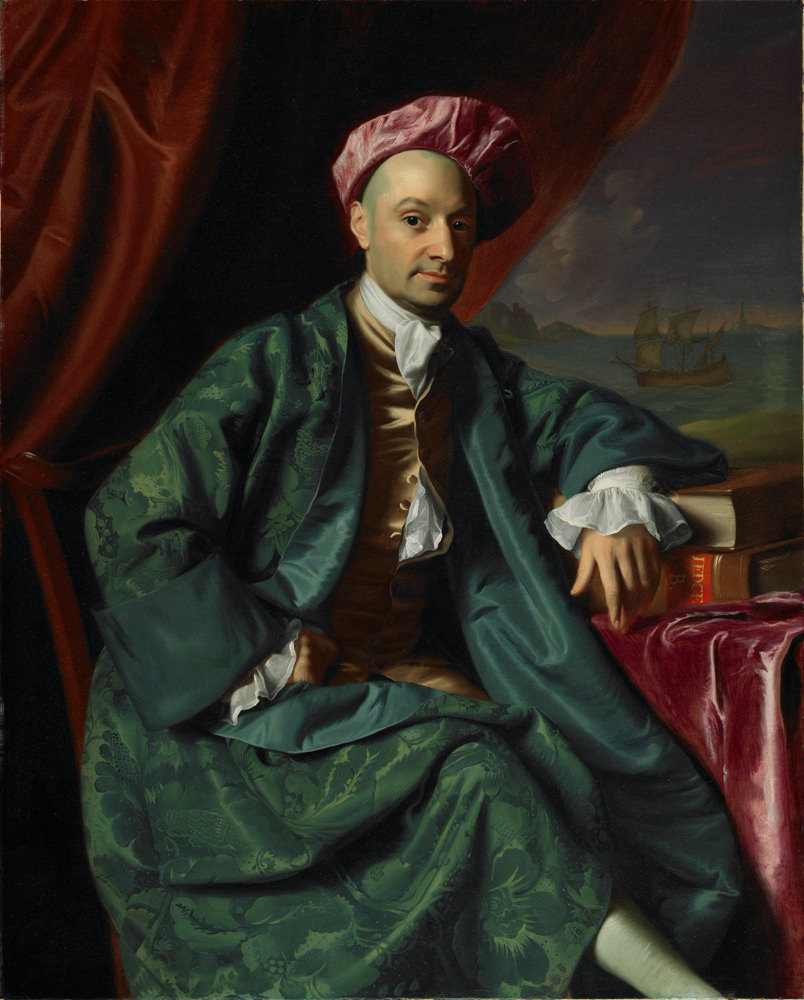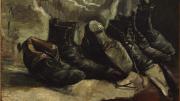The place I remember most from freshman fall won’t show up on Google’s map of Harvard. I took a class whose questions permeate my studies to this day: “Racial Capitalism and the Black Radical Tradition,” taught by history professors Vincent Brown and Walter Johnson. The initial seminar room was too small to fit all who showed up, eager to pick up the tools necessary for dismantling what we opposed, so they took us underground. In a larger basement space of Quincy House, our conversations about the past became reckonings with the present: the innumerable ways that slavery and colonialism reverberate inside and beyond Harvard’s gates.
As the only first-year, I remember staying up late trying to cram in chapters of Cedric Robinson’s Black Marxism, enraptured by his analysis of what connected my two home countries—Trinidad & Tobago and Britain—and intimidated by my classmates’ depth of knowledge as much by our professors’. Bright in my mind remains the moment that former president of Philips Brooks House Association Anwar Omeish ’19 looked up from her laptop and launched into a legendary walkthrough of her research on Frantz Fanon’s corpus—the same week I barely skimmed The Wretched of the Earth, the Martinican psychiatrist’s roadmap for anti-colonial revolution. Before long, I’d stop to chat with her and other classmates I ran into and, as semesters passed, cherish their wisdom on how texts like these could inspire a life’s work. In the last session of the class, on “universities and activism,” we started to grapple with how this work starts here, at Harvard.
As historian Robin Kelley’s essay “Black Study, Black Struggle” told us, fighting for new student spaces or darker faces in University paintings wouldn’t bring us closer to the society we wanted. But challenging how universities contribute to broader ills might. I first thought that when Kelley advocated that we strive to be “in but not of” the university, he was just talking about us students. Joining the Student Labor Action Movement (SLAM) that fall changed my perspective. Alongside Omeish and other committed undergraduates, I began to organize with Harvard’s workers—who have long known what it means to be “in but not of” Harvard.
At our weekly 8 p.m. meetings in the Parlor Room of Phillips Brooks House, I met those responsible for the freshly prepared food, spotless tables, and well-organized books laid out before me, like magic. I met them through the horrors they recounted. The first few times I heard workers talk about unfair layoffs and how they campaigned against them, or how fear of retaliation often prevented them from speaking out against racism and sexual harassment, I felt engulfed by what lurked beneath the University’s manicured image.
Afterward, the closed side doors in Lamont opened, as did basement clerical offices and galley kitchens, where I sometimes visited Ed Childs, former shop steward of the Adams House dining hall, who worked at Harvard for 40 years. His stories would inspire me; it was SLAM (then known as the Progressive Students’ Labor Movement), he told me, who had occupied Mass Hall in 2001, pushing the oldest corporation in the Western Hemisphere to raise wages for dining-hall workers. We’d chat about what happened in meetings or, finally, get to know each other as people.
My mental map of campus changed as the distance between Ed, other workers, and me diminished. From the miles that often separated our living spaces and theirs, to the feet placed one in front of another whenever we circled the Smith Center Plaza, joyously shouting, “Harvard workers under attack! What do we do? Stand up, fight back!” In sporadic, intense, and fulfilling moments, we revealed the University as a workplace—to me and to those who saw and heard us. A workplace that contracts other companies to handle security for its market of ideas while enjoying the profits of a gluttonous endowment.
Sometimes at dinner with friends at Cabot House, I’d feel slighted if I heard myself or another student express off-handedly that something on the menu wasn’t to our taste. But the sound of our ingratitude masked the real ruse of the dining hall. As Martin Bernstein ’19, a SLAM member and baroque musician, told me one day over lunch at Adams, the setting lulls us into believing that we are the ones to be served: a largely wealthy student body served by working-class immigrants of color. Martin put words and shape to the noblesse oblige culture at Harvard, where “belonging” felt extractive and hierarchal. From peers like him and Omeish, and leading organizers like custodian Doris Reina-Landaverde, I learned a particular practice of listening: not just to what happened to workers in the here of immediate trauma, but to the there where they wanted to go, and how I, an international student, could support that vision.
During the years I participated in SLAM, President Donald Trump announced, with ever more racially charged dog whistles, that an estimated 400,000 Temporary Protected Status (TPS) workers would lose their homes in the United States. Defending the close to 200 mainly Central American and Haitian Harvard affiliates affected by those rulings became a top priority at our meetings. Doris, along with Ed and fellow union members Marta Bonilla, Genevieve Lechat, and Julio Perez, set up the Harvard TPS Coalition to organize workers across Greater Boston; students from Act On A Dream led protests with us in front of Memorial Church and Mass Hall; fellow SLAM members pushed for Harvard Crimson op-eds and petitions signed by students across Harvard’s schools. I smiled when a Crimson article confirmed that our months-long efforts appeared to have pushed President Drew Faust to send a letter to Congress, as President Lawrence Bacow did a year later. But the lack of sustained public pressure from the University, their employer, for their protection and for a path to permanent residency, soured our mood.
Harvard welcomed me from London with a special international students’ pre-orientation program, making it easier to navigate a culture that wasn’t my own. But rarely feeling at home in the United States made me notice how fragile any sense of stability was, and how others weren’t welcomed with care. So as threats to undocumented students and immigrant workers intensified, my foreign status didn’t seem so far removed from theirs.
I wasn’t shocked this past summer when U.S. Immigration and Customs Enforcement (ICE) threatened to deport me and other international students whose classes were to be online in the fall. What did stun me was the action that ensued at all levels of Harvard, which I’d never seen taken for workers like Doris, who has worked here for more than 15 years. Within just over a week, Harvard announced policy changes, issued public statements, and brought a joint lawsuit with MIT against the new ICE policy. While anxiously waiting to know where I would be for fall semester, I remembered something Doris, now nationally recognized for her activism, had told us last spring: “They don’t care about us, but they do care about you.” It felt like the University saw TPS holders as an expendable other, while I, an international student, satisfied its benevolent self-image.
“Abuse Of Power Comes As No Surprise” is a statement that flickered fast, along with many other Truisms, on contemporary artist Jenny Holzer’s ticker-tape sculpture on the lower level of the Harvard Art Museums, where I had starting working as a student guide. For a practice tour on my twenty-first birthday last November, Ed Childs joined my close friend and fellow SLAM member, Salma Abdelrahman ’20, to see Holzer’s work and show us his favorite painting in the museum, Vincent van Gogh’s Three Pairs of Shoes. Childs pointed toward each shoe, tracing with his finger how van Gogh’s attention to detail evokes the toil the late-nineteenth-century workers who owned them must have experienced: shaded creases of leather and straggled laces giving each pair a personality. With precise strokes, the painter challenged the notion that workers be seen as a homogeneous mass. Depicting their shoes strewn aside after a hard day’s work, van Gogh invited us to imagine what their leisure looked like.
The kind of listening the painting offered us resonated with the experiences we heard from Ed and others in SLAM. Like the Parlor Room circle in which we sat every week, the painting provided an opportunity for us to reflect on how we felt, and how workers wanted to be seen.

Nicholas Boylston (1716-1771), by John Singleton Copley
Image courtesy of Harvard Art Museums; © President and Fellows of Harvard College
On another day at the museum, I found myself upstairs facing Harvard benefactor Nicholas Boylston. In a 1767 portrait that his nephew gave to the College, he rests an oversized satin cuff on two imposing volumes. In the background, a ship sails the Atlantic. The recently rewritten wall text revealed why I felt so unsettled. The ship references the fortune his family amassed by “sending enslaved Africans and foreign goods to the Americas.” The red, draped velvet curtain surrounding him immediately seemed to clot and congeal. Walking to class and around Boston, I always wondered what warranted a classroom building and city street signs placing his name on high.
That ship showed me an inheritance that my body shares with the University. My last name, Applewhaite, I inherit from Norfolk, via Barbados, an island that England colonized exclusively for the profit of slave-owners. Inside the brown hold of Boylston’s ship lay a body like mine.
That slave ship reminded me of the time when another SLAM member gave me a copy of The Undercommons, by theorists and poets Fred Moten ’84 and Stefano Harney ’85. That book conjured what the enslaved created when the ship’s hold gathered their “dispossessed feelings” together. A “terrible gift” arrived, that of a “new feel” shared in antagonism to the shackles that prevented physical touch. Under the deck, they redefined their confinement as their “undercommons.”
In a University in which some of their number toiled after the ship docked in Boston, the “undercommons” provided words for how I felt about our Parlor Room community. Without formal power, but with a space in which we could feel together, we contested the ambivalence toward injustice—both past and present—that is so common to being included at Harvard. That day of my birthday tour, when Salma, Ed, and I absorbed the worn leather creases of van Gogh’s painting, felt like a celebration of how students and workers could share this gift of an inheritance. We went on to celebrate some more—chatting and dancing with Anwar and Genevieve at my party that evening.
Now, on the days that I walk through a much quieter Yard, the sounds of study and struggle, past and continued, echo among rustling tree leaves. Within me I hold the marches, speeches, and circles that redrew community at Harvard in our image.









